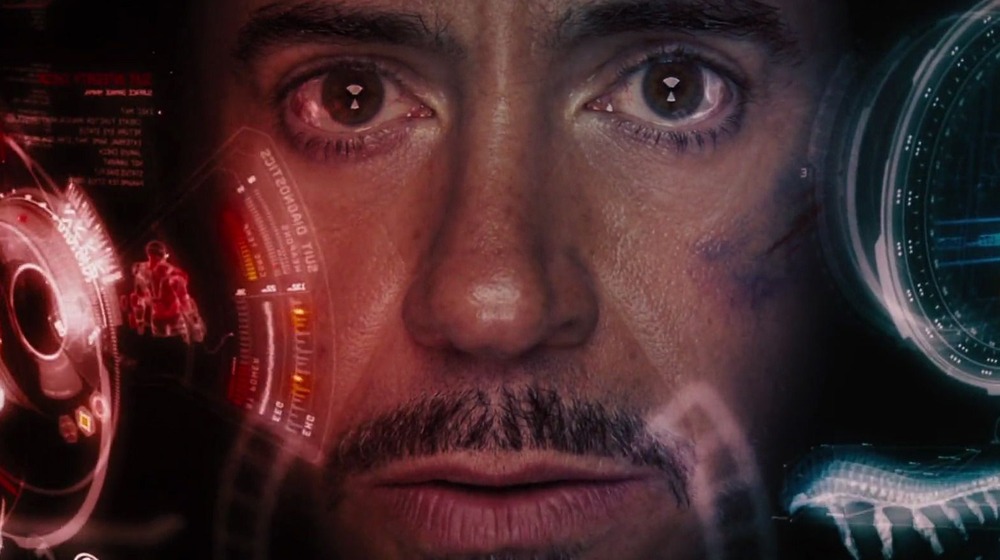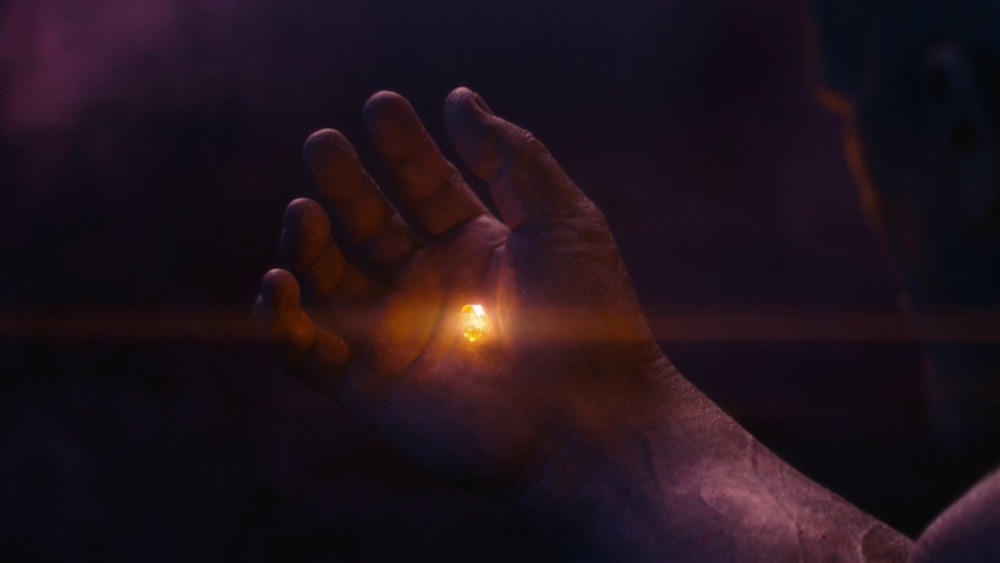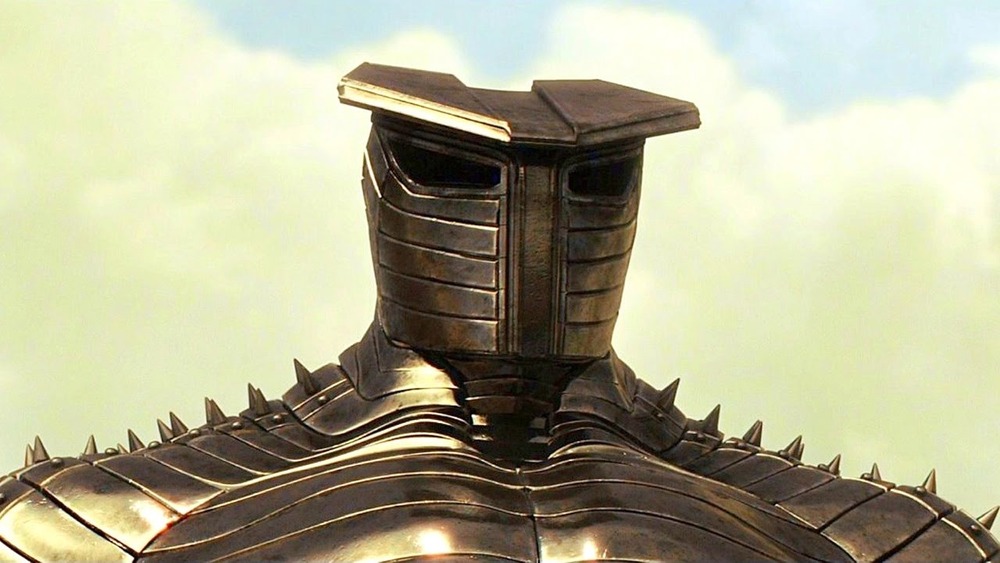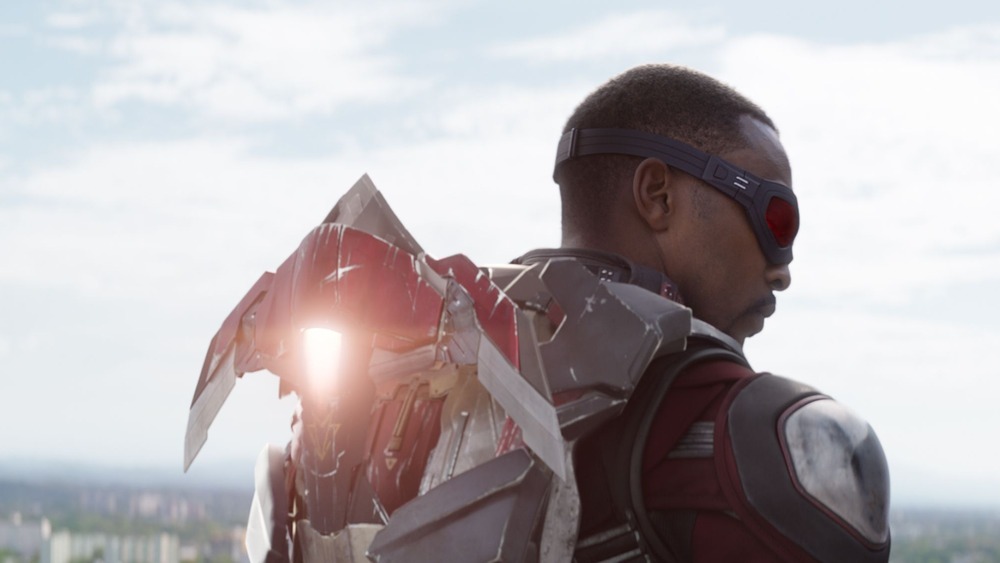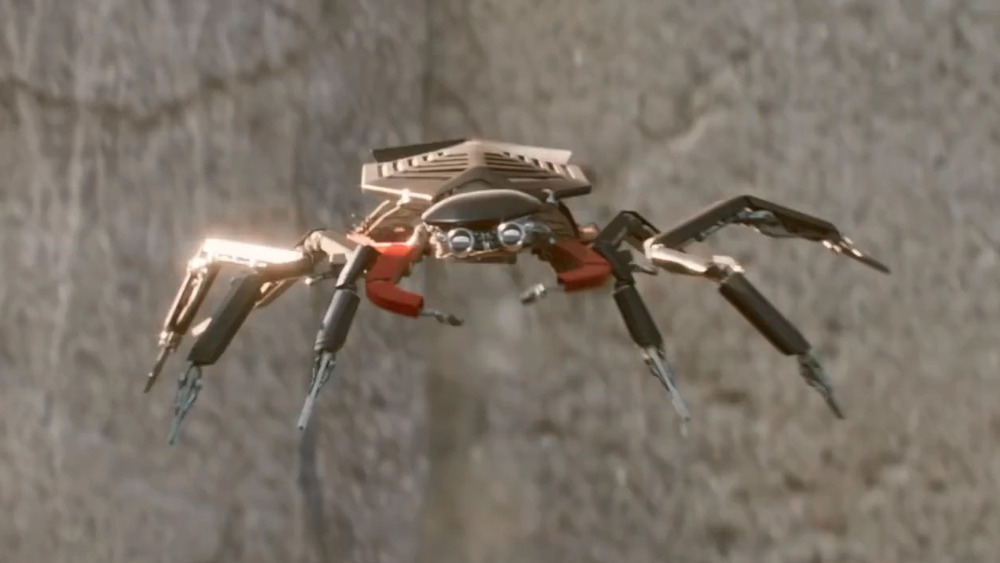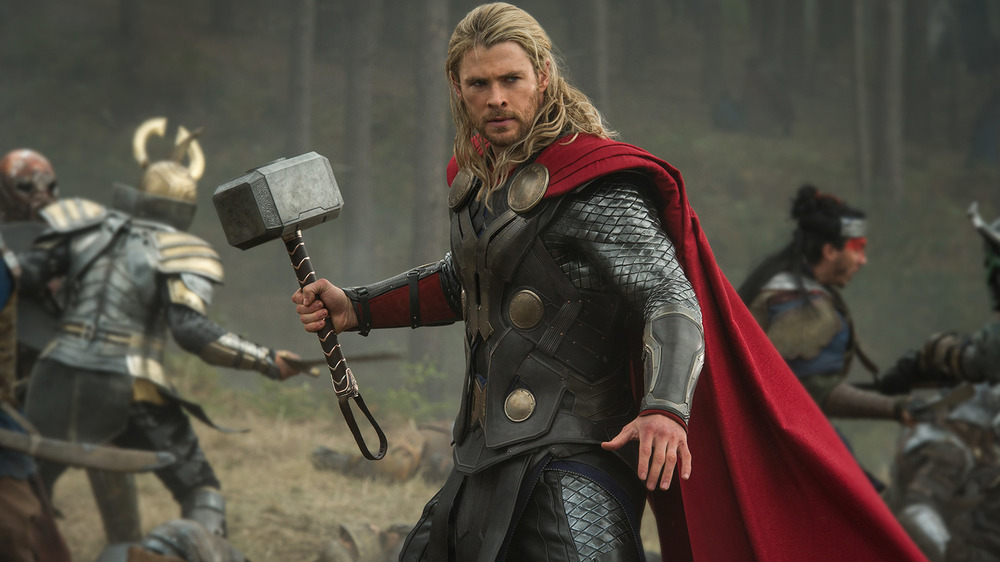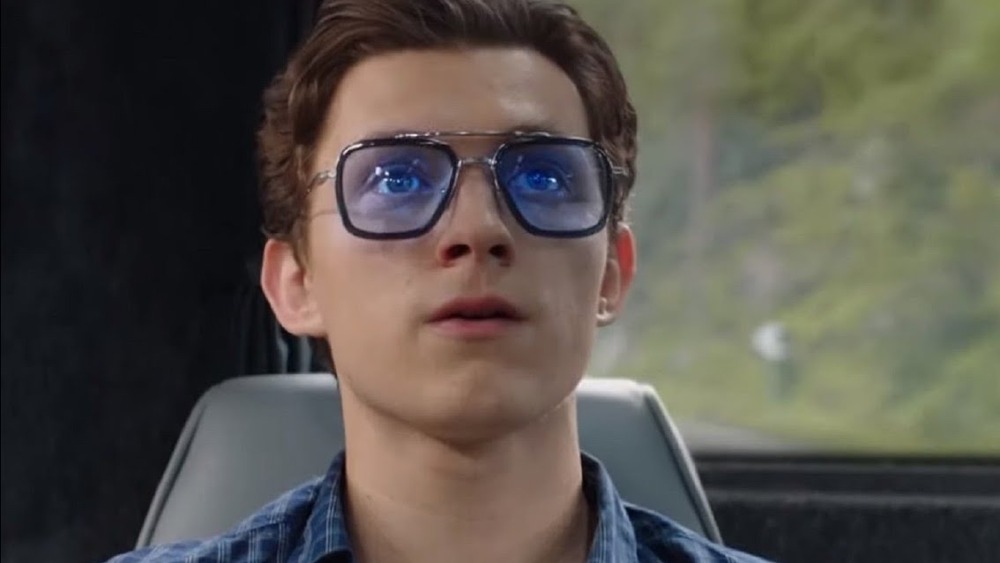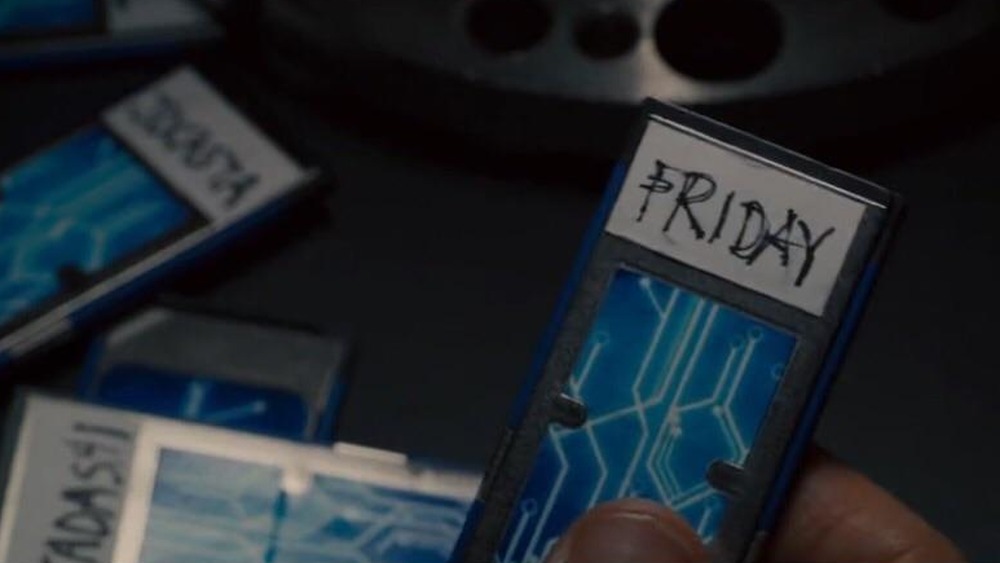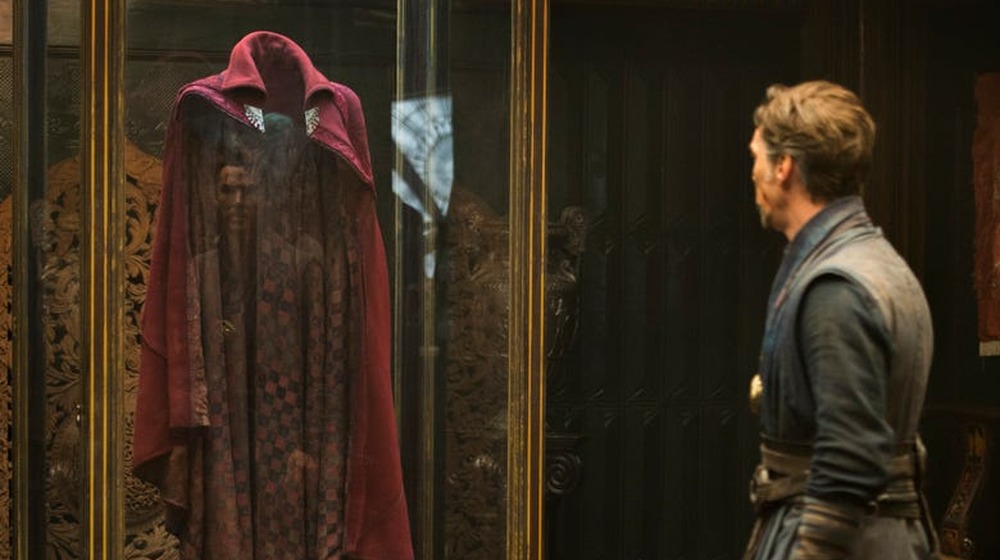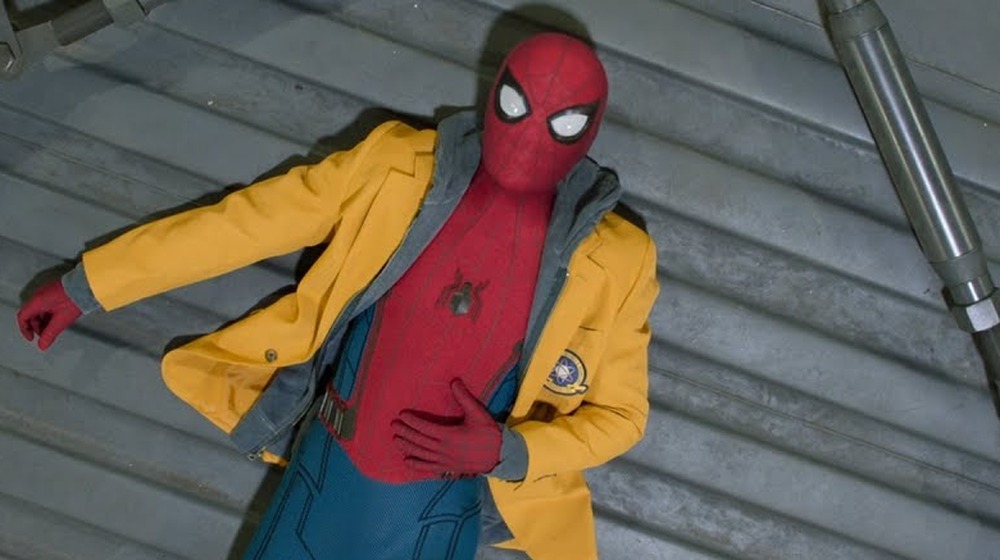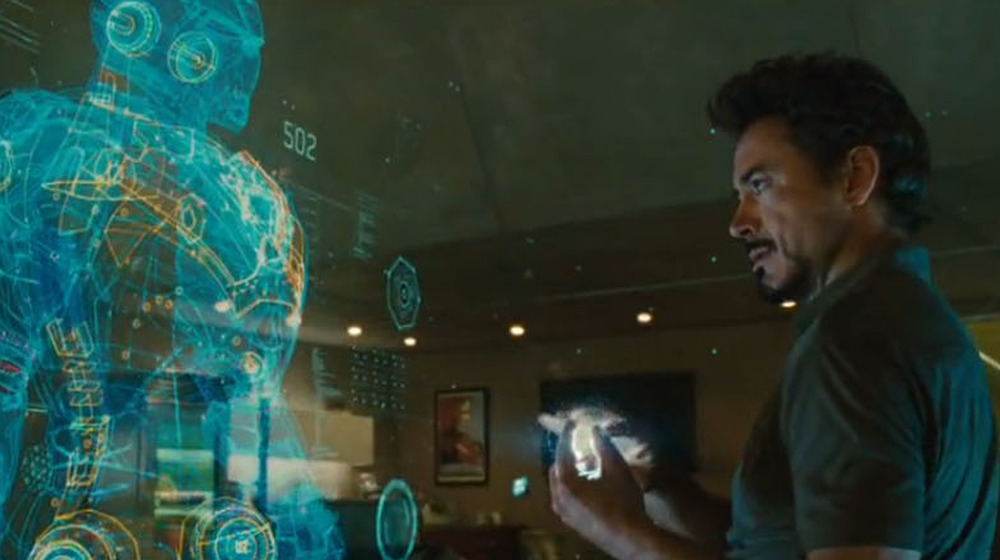The Best Sentient MCU Objects Ranked
The Marvel Cinematic Universe boasts a wide array of fantastic characters. Super soldiers shouldering the weight of the past, spies looking to atone for their sins, alien creatures toting huge guns who happen to look like raccoons — these memorable figures are the beating heart of the franchise. But some of the MCU's most heroic and dangerous figures don't look like people (or particularly expressive animals) at all. Nevertheless, they are still intelligent beings with strong personalities, well-developed character arcs, and key roles in the MCU's over-arching story. These sentient objects might not have a face, but they do have a whole lot of heart.
In a universe full of advanced AIs, Asgardian weapons, magical artifacts, and all-powerful Infinity Stones, a character can be almost anyone or anything. And while it might be tempting to give all the credit to the main superheroes of these stories, the contributions of these intelligent artifacts can't be denied. In celebration of these heroic constructs, we've decided to rank the most beloved sentient objects of the MCU, based on their intelligence, self-awareness, morality, and level of consciousness. Some of our choices might cause you to raise your eyebrows, as you may not have considered them sentient beings to begin with. But remember: This is a cinematic universe where a bodiless computer program can evolve into one of the most powerful and sympathetic Avengers around. These pieces of clothing, weaponry, and armor are artificial, but their impact is altogether authentic.
The Soul Stone
In the original comics, the Soul Gem is one of the more unique Infinity Gems. While all of the Infinity Gems possess great power, the Soul Gem contains an entire reality, known as "Soulworld," where the souls of all the beings the gem has absorbed live. In 1976's Warlock #15, one of the Soul Gem's keepers, Adam Warlock, manages to communicate with the Gem, and learns of its desire to collect souls. In 2019's Infinity Wars #6, Adam Warlock is able to use the Soul Gem to grant souls to the other Infinity Gems and let them decide their own destinies. They proceed to zoom off into the far reaches of the universe.
In the MCU, the Soul Stone does not seem to have such a high level of sentience. Nevertheless, in Avengers: Infinity War, the Red Skull (Ross Marquand) acknowledges that the Soul Stone possesses "a certain wisdom," and "demands a sacrifice" from those who covet its power — requiring both Thanos (Josh Brolin) and later Hawkeye (Jeremy Renner) in Avengers: Endgame to sacrifice the lives of Gamora (Zoe Saldana) and Black Widow (Scarlett Johansson) in order to obtain the stone.
Considering the fact that the MCU's version of the Soul Stone seems to be motivated largely by its appetite for souls, it ranks fairly low on this list. The Soul Stone may possess "wisdom" and a degree of self-awareness, but ultimately, its sentience is driven by base urges.
The Destroyer
Originally used as a guardian for Odin's treasure room, the Asgardian weapon known as the Destroyer eventually becomes a pawn of Loki's when he uses it to gain revenge on his brother Thor in the first MCU Thor film. After sending it to Midgard (AKA Earth), Loki (Tom Hiddleston) orders the Destroyer to go on a rampage in New Mexico, attacking S.H.I.E.L.D. agents, the Warriors Three, and civilians until Thor (Chris Hemsworth) goes up against it, sans superpowers.
Fortunately, allowing the Destroyer to attack him in such a state makes the thunder god worthy of wielding Mjolnir again, and he uses his restored powers to make short work of the formidable automaton. The Destroyer shows up one more time in the tie-in MCU comic book series Fury's Big Week. In this series, S.H.I.E.L.D. manages to tap into the Destroyer's power and construct special weapons from the knowledge they glean, including the one that Agent Phil Coulson (Clark Gregg) uses against Loki in The Avengers.
Since Loki totally controls the Destroyer in its most memorable appearance, its mental strength is likely not very strong. Nevertheless, since the Destroyer was originally built to protect Asgard's treasures and dangerous weapons, this animated suit of Asgardian armor has at least some degree of autonomous thought. Certainly, it needs to be able to distinguish between allies and enemies to do its job — although Loki's actions do show that this part of its programming can be tidily overridden.
Redwing
In the comics, Sam Wilson (AKA the Falcon) has an actual falcon for a sidekick. Named Redwing, the bird possesses a telepathic link with Sam, thanks to exposure to the Cosmic Cube in 1975's Captain America #186. This enables Sam to psychically "see" through Redwing's eyes, making the falcon an ideal scout. Redwing would go on to join other animal sidekicks in Marvel's Pet Avengers miniseries, and reveal he's sentient and capable of chatting with other animals.
In the Marvel Cinematic Universe, Redwing is a combat and reconnaissance drone created by Stark Industries and used by the MCU version of Sam Wilson (Anthony Mackie). Housed in Sam's EXO-7 Falcon harness, the original Redwing drone is deployed to function as a scout to assess enemy locations in Avengers: Age of Ultron. In Captain America: Civil War, Sam deploys Redwing in a more direct manner by using him as a projectile weapon against Iron Man (Robert Downey Jr.), and to grapple with Spider-Man (Tom Holland).
Sam treats his Redwing drone like a pet, calling him "little guy" and encouraging other Avengers to pet him, but it's unclear if this Redwing has any degree of sentience. However, in The Falcon and the Winter Soldier, Sam acquires a new Redwing with greater autonomy. This Redwing responds to Sam's verbal commands and appears intelligent enough to navigate autonomously through tight spaces. Considering it was built by Stark Industries, it likely has some form of AI, and might be capable of developing a true personality.
"Droney," AKA Spider-Drone
In the MCU, Spider-Man's spider isn't just a cool chest emblem — it's a fully-functioning drone that Spidey can remove from his costume and send out to secretly scout enemy locations. Like Falcon's Redwing drone, the Spider-Drone (which Peter Parker adorably nicknames "Droney" in Spider-Man: Homecoming) can fly, and is capable of sending visual images back to Spider-Man's high-tech eye pieces. Droney can also respond to Spider-Man's vocal commands, and has a link to Spidey's other AI system, Karen.
Droney ranks slightly higher than Redwing on this list because the clever little creation actually displays something of a personality in Spider-Man: Homecoming, settling down on Spidey's head and crawling on the webslinger when it's not following its master's orders. It's also capable of coordinating with Karen and Spider-Man, indicating it has a fairly sophisticated Stark AI system and some degree of true sentience. Sam might treat Redwing like a pet, but Droney has displayed more truly pet-like attributes.
Unfortunately, this particular drone hasn't been seen since Tony Stark took back the original Spider-Man suit. Since Droney was intended to be one of the crimefighting gadgets Peter would have access to only after successfully completing his training program (which Peter hacks his way out of), it's possible Droney was permanently deactivated. Here's hoping we haven't seen the last of this adorable artificial arachnid and his array of useful features.
Mjolnir
Thor's hammer Mjolnir is a curious object when it comes to measuring sentience. In the comic books, some versions of Mjolnir's origin establish that Odin trapped the God Tempest, a cosmic storm of gargantuan size, within the Uru metal used to forge the iconic hammer. The colossal storm's lingering consciousness dictates who is worthy of wielding Mjolnir, and, generally speaking, demonstrates some seriously solid judgement.
In the MCU, Odin (Anthony Hopkins) simply proclaims that the hammer can only be held by one who is worthy of wielding the power of Thor. Thus far, only three people have proven worthy of the power granted by the hammer: Thor, Vision, and Captain America. Exactly what makes them so worthy is up for debate — Thor needed to learn the virtue of humility to heft the hammer, Vision has a certain purity thanks to his AI nature, and Steve Rogers has always been a very moral and ethical person.
What's significant about all of this is that the hammer has some way of sensing the virtues or flaws within those who try to lift it, allowing it to decide whether any of them are worthy or not. This certainly indicates the hammer has some form of intelligence, a self-awareness of its responsibilities, and even a moral framework. It's not necessarily alive in the way an organic person is, but Mjolnir is still capable of forging "a special relationship" with its wielders, as Korg works out in Thor: Ragnarök.
E.D.I.T.H
In Spider-Man: Far From Home, Peter Parker receives a unusual gift from the late Tony Stark: A pair of glasses containing the AI program E.D.I.T.H (voiced by Dawn Michelle King), its name being an acronym for "Even Dead I'm the Hero." E.D.I.T.H grants Peter access to Stark's powerful defensive grid, enabling him to, among other things, launch drone strikes from space. This mega-powerful AI can also hack into secure systems and allow Peter to see people's private text messages in real time.
E.D.I.T.H's destructive potential is fully explored when Peter naively transfers ownership of the glasses to Quentin Beck, AKA Mysterio (Jake Gyllenhaal). The villain promptly uses them to spy on people and commandeer Stark's deadly fleet of drones. While Spider-Man is able to regain control of the AI, his actions inadvertently threaten many people.
While this AI seems relatively friendly around Peter, E.D.I.T.H also doesn't seem to have an underlying moral code, as she has no problem obeying deadly orders once her ownership is transferred to Beck. Although her program attempts to protect Beck by keeping him out of the line of fire when he orders a drone attack, she even allows him to be shot when he overrides her safety protocols. This AI may be more sophisticated than other artificial intelligences, but her morality is too easily compromised.
F.R.I.D.A.Y
When Tony Stark loses access to his original AI program, J.A.R.V.I.S., in Avengers: Age of Ultron, he turns to his other backup AIs for assistance. After passing up a chance to use an AI named J.O.C.A.S.T.A. (an AI who becomes a heroic robotic Avenger in the comics), Stark instead loads the AI program named F.R.I.D.A.Y. into his Iron Man suit.
In the comics, F.R.I.D.A.Y's name is an acronym for "Female Replacement Intelligent Digital Assistant Youth" — though it's also intended as a sly wink to the fact that she is created to be Tony Stark's "girl Friday." She first appears in 2002's Iron Man #53. Created to function as Tony Stark's secretary, the comics version of F.R.I.D.A.Y initially manifests as a temperamental young woman who gradually matures and is given a robotic body of her own to inhabit.
In the MCU, F.R.I.D.A.Y is voiced by Irish actress Kerry Condon. She proves to be an efficient partner for Iron Man, running numbers for him during his rescue attempts and even remote piloting his fleet of armor in Spider-Man: Homecoming. However, while she is very good at her job, she fails to showcase the same level of personality or personal connection Tony's other AI assisstants display. Even when Tony dies at the end of Avengers: Endgame, F.R.I.D.A.Y fails to say anything more than, "Life functions critical." Considering she and Stark have been partners for years, one would think they'd have a bit more camaraderie.
The Cloak of Levitation
Not all sentient objects in the Marvel Cinematic Universe come from Asgard or Stark Industries. Some, like Doctor Strange's Cloak of Levitation, come from stranger climes and boast their own colorful personalities. A magical relic, the Cloak appears as one of the items on display in the New York Sanctum during the first solo Doctor Strange film. When Stephen Strange (Benedict Cumberbatch) gets into a fight with some mystic warriors, however, the Cloak ditches its case and comes to his aid, thus choosing him as its new master.
Aside from giving Doctor Strange the power of flight, the Cloak grants him valuable guidance by literally dragging him towards the most effective weapon in the Sanctum, enabling him to trap the villainous Kaecilius (Mads Mikkelsen). Despite not being able to speak, the Cloak further reveals it is not only sentient, but friendly, even stroking Strange's face affectionately when he pops up its collar. Awwww.
In later appearances, the Cloak reveals it is incredibly loyal and brave. When Doctor Strange gets kidnapped by Thanos' underlings in Avengers: Infinity War, the Cloak literally yanks him out of their grasp and tries to fly him to safety. Later, it wraps itself around Thanos' arm to prevent him from using the Infinity Gauntlet, although this causes the Mad Titan to rip the Cloak off and possibly damage it. As Tony Stark notes when he sees the Cloak hovering near its master, "You are a seriously loyal piece of outerwear, aren't you?"
Karen
Peter Parker's Spider-Man suit comes with a lot of cool features in Spider-Man: Homecoming, but one of the most memorable is his AI program, Karen. Voiced by Oscar-winner Jennifer Connelly (who also happens to be the real-life wife of Paul Bettany, the voice of Iron Man's AI J.A.R.V.I.S. and, eventually, the Vision), Karen tutors Peter on all the high-tech functions of his suit and assists him with his crimefighting responsibilities. She even chats with Peter socially, and seems genuinely interested in his life and school activities.
Unlike Stark's other AIs, Karen doesn't have an acronym: Peter names her himself after feeling bad about calling her "suit lady" all the time. Karen does show some violent tendencies, being altogether too eager to activate the "Instant Kill" function of Spider-Man's suit. Yet she also has a surprisingly soft side, giving Peter advice on his love life and responsibilities.
Unfortunately, Karen hasn't made an appearance in the MCU since Spidey's first flick. As Peter hadn't completed his formal suit training, it's possible Stark deactivated her program, along with the more advanced features in Peter's suit, when Peter returned it at the end of Spider-Man: Homecoming. Considering Peter accepts help from his friend Ned, AKA "the Guy in the Chair," here's hoping "the Girl in the Suit" is bound for a return appearance.
J.A.R.V.I.S.
Was there any doubt who would make the top of this list? Introduced in the original Iron Man film, J.A.R.V.I.S. (Paul Bettany), is an advanced AI whose acronym stands for "Just a Rather Very Intelligent System." J.A.R.V.I.S. certainly lives up to his name, as he runs all the internal systems in Tony Stark's buildings, quite a lot of Stark Industries' business dealings, and assists Tony in the lab. He later helps pilot the Iron Man suit, and in Iron Man 3, reveals he's capable of piloting multiple Iron Man suits simultaneously, making him an arguably more capable superhero than Iron Man himself.
Most notably, J.A.R.V.I.S. has a very strong personality. Although he's built to serve Tony Stark, he's no servant. Instead, he regularly makes sarcastic comments about his maker-employer's social and work habits, and openly ridicules Stark's decision to color his Iron Man suit red and gold. Nevertheless, he shares an undeniable friendship with Tony, who feels genuinely sad when his AI assistant shuts down following an attack in Iron Man 3.
Avengers: Age of Ultron reveals how sophisticated J.A.R.V.I.S. truly is. Even after Ultron seemingly destroys him, J.A.R.V.I.S.' consciousness continues to prevent Ultron from gaining Earth's nuclear codes. With such a strong sense of morality, it's no wonder that Tony chooses J.A.R.V.I.S. to inhabit Ultron's new synthetic body and evolve into the Vision, an utterly unprecedented "synthezoid."
